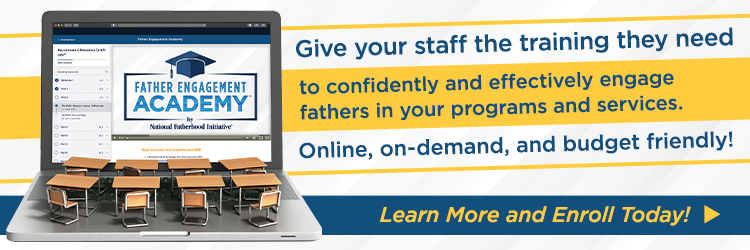Don’t Leave Out This Key Ingredient for A Successful Group-Based Program
2 min read
Date Published: 11/10/2021
Last Updated: 11/18/2021
National Fatherhood Initiative Blog / Latest Articles
2 min read


If you run a group-based fatherhood program, you know the ingredients for success: great facilitators, an evidence-based curriculum – such as 24/7 Dad® or InsideOut Dad® – and multiple marketing tactics that motivate dads to attend.
But, an often-overlooked ingredient is how you deliver your program.
A great way to create a “tastier” experience for your dads is to use closed enrollment.
Closed enrollment requires dads to join on session 1 together, then complete all sessions as a cohort in the order in which they appear in the curriculum. Open enrollment – in contrast – is where dads can join on any session.
Open enrollment can hinder your program outcomes in several ways, including:
Moreover, a study conducted by Mathematica Policy Research found that participation and retention was much higher in closed enrollment delivery (referred to as “integrated cohort”) versus open enrollment delivery (referred to as “open-entry”).
While closed enrollment is the gold standard for group dynamics, it also presents some challenges, including:
So, what can you do to offer closed enrollment when you run into these – or similar – challenges?
I’m glad you asked!
Here are a few tactics to consider:
A successful fatherhood program requires a blend of many ingredients – miss one and it won’t taste as good to the dads. To serve up the best dish possible, stir in some closed enrollment!
Do you offer closed or open enrollment delivery for your fatherhood programs?
If you offer closed enrollment, what tactics have you used to address the challenges listed above?
If you offer open enrollment, which tactic best addresses the challenges you face?

Date Published: 11/10/2021
Last Updated: 11/18/2021
Download the ebook to learn how to create fatherhood initiatives that engage every sector of community life.

Train Your Staff
Fatherhood Programs
Fatherhood Data
© 2026 National Fatherhood Initiative®. All rights reserved.